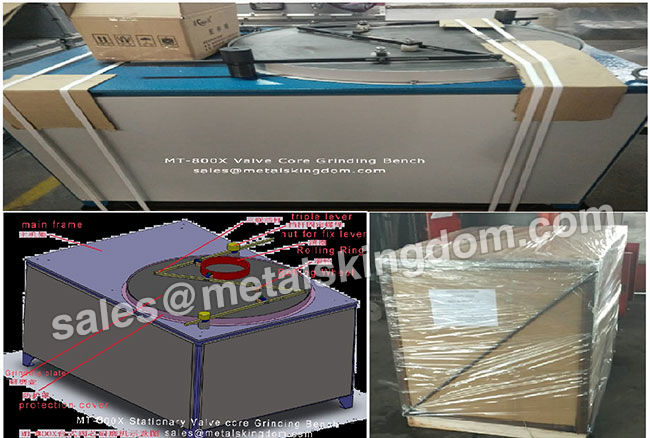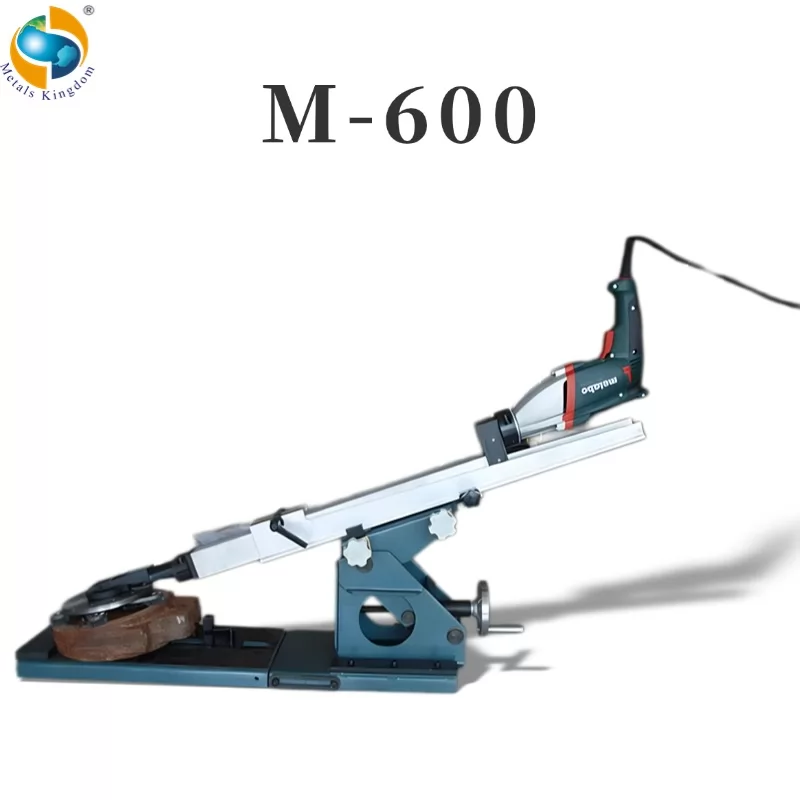The grinding of the valve includes the cleaning and inspection process, the grinding process, and the inspection process. Valve Grinding Machine Supplier shares this article with you.
1. Cleaning and inspection process
Clean the sealing surface in the oil pan, use a professional cleaning agent, and check the damage to the sealing surface while washing. Fine cracks that are difficult to identify with the naked eye can be carried out by staining flaw detection.
After cleaning, check the tightness of the disc or gate valve and the sealing surface of the valve seat. Use red and pencil when checking. Use red lead to test the red, check the seal of the sealing surface to determine the tightness of the sealing surface; or use a pencil to draw several concentric circles on the sealing surface of the valve disc and the valve seat, and then rotate the valve disc and the valve seat tightly and check the pencil circle Wipes off the situation to confirm the tightness of the sealing surface. If the tightness is not good, a standard flat plate can be used to inspect the sealing surface of the disc or gate and the sealing surface of the valve body respectively to determine the grinding position.

Gate Valve Grinder Equipment
2. Grinding process
The grinding process is essentially a cutting process without a lathe. The depth of the pits or small holes on the valve head or valve seat is generally within 0.5mm, and the grinding method can be used for maintenance. The grinding process is divided into coarse grinding, middle grinding and fine grinding.
Rough grinding is to eliminate defects such as scratches, indentations, and corrosion points on the sealing surface, so that the sealing surface can obtain higher flatness and a certain degree of smoothness, and lay the foundation for the middle grinding of the sealing surface. Coarse grinding uses grinding head or grinding seat tools, using coarse-grained sandpaper or coarse-grained grinding paste, with a particle size of 80#-280#, coarse particle size, large cutting volume, high efficiency, but deep cutting lines and rough sealing surface. Therefore, rough grinding only needs to smoothly remove the pitting of the valve head or valve seat.
The middle grinding is to eliminate the rough lines on the sealing surface and further improve the flatness and smoothness of the sealing surface. Use fine-grained sandpaper or fine-grained abrasive paste, the particle size is 280#-W5, the particle size is fine, the cutting amount is small, which is beneficial to reduce the roughness; at the same time, the corresponding grinding tool should be replaced, and the grinding tool should be clean. After the middle grinding, the contact surface of the valve should be bright. If you draw a few strokes on the valve head or valve seat with a pencil, turn the valve head or valve seat lightly around, and erase the pencil line.
Fine grinding is the last process of valve grinding, mainly to improve the smoothness of the sealing surface. For fine grinding, it can be diluted with engine oil, kerosene, etc. with W5 or finer fractions, and then the valve head is used to grind the valve seat instead of drama, which is more conducive to the tightness of the sealing surface. When grinding, generally turn it clockwise about 60-100°, and then turn it about 40-90° in the opposite direction. Gently grind for a while. It must be checked once. After the grinding is bright and shiny, it can be seen on the valve head and valve seat. When there is a very thin line and the color is black and bright, lightly rub it with engine oil several times and wipe it with clean gauze. After grinding, other defects should be eliminated, that is, assembling as soon as possible to avoid damage to a ground valve head.
Manual grinding, regardless of rough grinding or fine grinding, always runs through the grinding process of lifting, lowering, rotating, reciprocating, tapping, and reversing operations. The purpose is to avoid the repetition of the abrasive grain track so that the grinding tool and the sealing surface can be uniformly ground, and the flatness and smoothness of the sealing surface can be improved.
3. Inspection stage
In the grinding process, the inspection stage is always running through, and its purpose is to keep abreast of the grinding situation at any time so that the grinding quality can meet the technical requirements. It should be noted that when grinding different valves, grinding tools suitable for various sealing surface forms should be used to improve grinding efficiency and ensure grinding quality.
Gate valve grinder equipment is very meticulous work, which requires constant experience, exploration, and improvement in practice. Sometimes the grinding is very good, but after installation, it still leaks steam and water. This is because there is an image of grinding deviation during the grinding process. The grinding rod is not vertical, skewed, or the size and angle of the grinding tool deviate.












